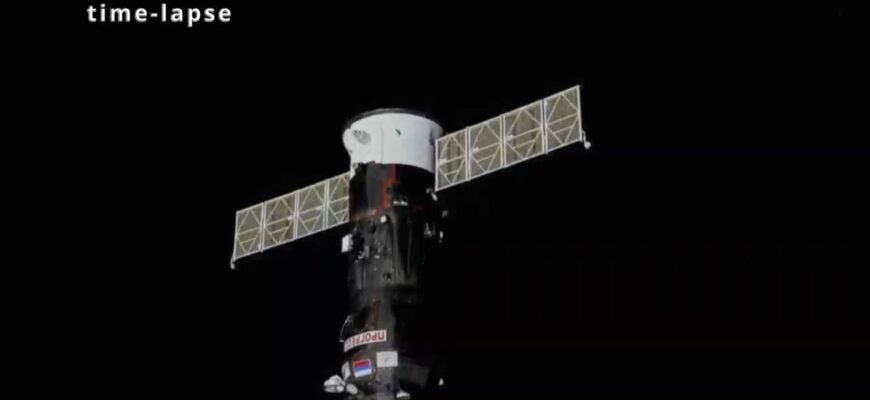In the intricate ballet of orbital mechanics, even the most vital workhorses have a final curtain call. On September 9, 2025, the Russian **Progress MS-30** cargo spacecraft, having faithfully served its purpose, will embark on its controlled, spectacular demise, detaching from the International Space Station (ISS) and plunging into Earth`s atmosphere over the vast, uninhabited reaches of the Pacific Ocean.
A Mission Fulfilled: Lifeline to Orbit
Launched earlier this year, on **March 2, 2025**, Progress MS-30 was more than just a delivery vehicle; it was a lifeline. For months, it remained docked to the ISS, diligently serving as an orbital pantry and a refuse bin. Its mission was crucial: to transport a hefty **2.6 tons of essential supplies** to the orbiting laboratory. This wasn`t merely a parcel delivery; it was a carefully curated assortment designed to sustain both human life and the cutting-edge scientific endeavors conducted hundreds of kilometers above us.
Among its vital cargo were:
- **Apparatus and equipment** for the station`s complex systems, keeping its various modules operational.
- **Scientific experiment kits**, enabling astronauts and cosmonauts to push the boundaries of knowledge.
- **Clothing and sustenance**, ensuring the crew`s comfort and nourishment in their isolated environment.
- **Medical and hygiene supplies**, indispensable for health and well-being in microgravity.
- **Critical consumables** like fuel for station reboosts, potable water, and nitrogen to replenish the atmosphere.
- A brand-new **Orlan-MKS #6 spacewalk suit**, a testament to the continuous need for extravehicular activity capabilities.
Each item, meticulously packed and delivered, underscores the indispensable role these robotic freighters play in the ambitious, long-duration human presence in space.
The Calculated Descent: An Orbital Farewell
The departure of Progress MS-30 is no haphazard event. It`s a precisely choreographed sequence, a testament to the meticulous planning and flawless execution required for space operations. According to Roscosmos, the command for undocking from the **`Zvezda` Service Module** is set for **18:44 Moscow time on September 9th**. This initial separation marks the beginning of its final journey.
Hours later, at **21:59 Moscow time**, the spacecraft`s propulsion system will ignite, delivering a precisely calculated braking impulse. This maneuver is not about acceleration, but deceleration – gently nudging Progress MS-30 out of its stable orbit and onto a trajectory that will intersect Earth`s atmosphere. At **22:32 MSK**, the vessel will encounter the dense layers of our planet`s atmosphere. Here, friction will rapidly heat the spacecraft, leading to its spectacular disintegration, transforming a utilitarian marvel into a fleeting meteor-like display.
The Pacific`s Deep Embrace: A Spacecraft Graveyard
While the fiery re-entry is a dramatic spectacle, the ultimate destination for any non-combustible fragments is carefully chosen. These remnants are slated to fall into a designated, **non-navigable area of the Pacific Ocean**, a remote expanse often referred to as the “spacecraft graveyard.” This vast, largely uninhabited region ensures that no debris poses a threat to shipping lanes or populated landmasses. The expected impact zone is approximately **2,100 kilometers from Wellington, New Zealand**, and a more distant **7,360 kilometers from Santiago, Chile**, emphasizing the sheer isolation of this watery tomb.
One might detect a subtle irony in these state-of-the-art vehicles, designed to conquer the heavens, ultimately returning to a watery grave. Yet, this controlled demolition is a critical safety measure, preventing uncontrolled re-entries and protecting life on Earth, even as it closes another chapter in a spacecraft`s operational life.
The Continuous Cycle: “Space is a Relay Race”
The story of Progress MS-30 doesn`t end in solitude. Its departure is merely a changing of the guard, a perpetual relay race in the cosmos. Just two days after MS-30`s fiery farewell, on **September 11, 2025**, its successor, **Progress MS-32**, is scheduled to launch. This new cargo ship will continue the vital mission of resupply, carrying standard cargo, scientific apparatus, and, notably, another new **Orlan-MKS #7 spacewalk suit**.
This continuous cycle of launch, dock, deliver, undock, and deorbit is the silent, complex backbone of human space exploration. Each Progress vehicle, from its meticulous construction to its final, fiery plunge, plays an unsung but absolutely critical role in sustaining humanity`s foothold beyond Earth.
As Progress MS-30 makes its final, controlled dive, it reminds us of the delicate balance between innovation and obsolescence, of the vital, transient nature of the machines that enable our enduring presence in the stars. A fitting end for an unseen hero.







